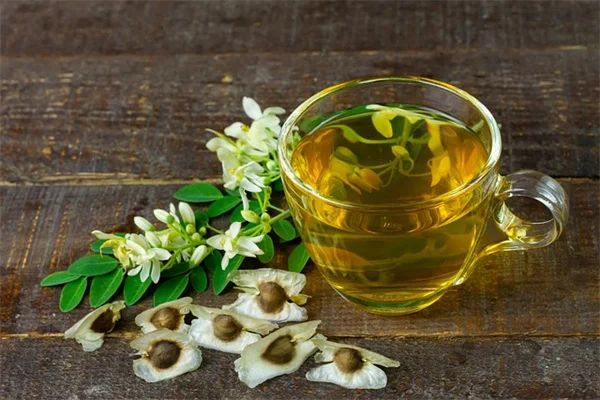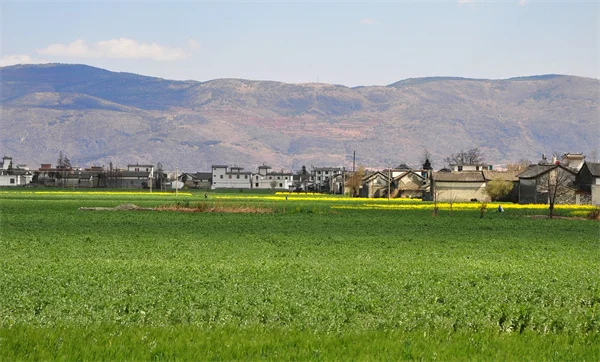Cyclosporiasis Outbreak: 5 Shocking Facts About the Parasite in Your Salad
Advertisement
Are cases of cyclosporiasis really increasing in the U.S.? The answer is yes - and alarmingly fast! According to CDC data, reported cases tripled from 2016 to 2019, with Florida seeing a particularly dramatic spike. The main culprit? Those convenient pre-packaged salad kits we all buy for quick, healthy meals. But here's what you need to know: while this microscopic parasite can cause nasty symptoms like watery diarrhea and stomach cramps, there are simple steps you can take to protect yourself. I'll walk you through everything from how it spreads to what treatment options work best. The good news is that with proper precautions, you don't need to give up your favorite greens - you just need to be smart about food safety.
E.g. :Borax TikTok Trend: Why Drinking This Cleaner Is Dangerous
- 1、The Rise of Cyclosporiasis Cases in America
- 2、Understanding Cyclosporiasis
- 3、Diagnosis and Treatment Options
- 4、Prevention and Food Safety
- 5、Looking to the Future
- 6、The Hidden Costs of Foodborne Illnesses
- 7、Global Food Trade Complications
- 8、Innovations in Food Safety
- 9、The Human Element in Food Safety
- 10、The Psychological Impact of Outbreaks
- 11、FAQs
The Rise of Cyclosporiasis Cases in America
Why Are We Seeing More Cases Now?
Have you noticed more news stories about foodborne illnesses lately? You're not imagining things - cases of cyclosporiasis have been skyrocketing across the U.S. Let me break down what's happening.
The CDC reports that between 2016 and 2019, cases tripled from 537 to 4,703. That's like going from a small town's population to a small city getting sick! Florida saw particularly bad numbers, with cases doubling just from 2021 to 2022. One major culprit? Those convenient bagged salad kits we all love.
The Salad Connection
Here's something that might surprise you - your healthy lunch could be making you sick. Scientists traced Florida's 2022 outbreak to contaminated salad kits. But why salad? The microscopic parasite called Cyclospora cayetanensis thrives on fresh produce.
Think about how salad greens are grown and processed. They're exposed to water sources that might contain the parasite, then packaged without cooking - giving the parasite a free ride to your plate. This doesn't mean you should stop eating salads, but it does mean we need better food safety measures.
| Year | Reported Cases | Increase |
|---|---|---|
| 2016 | 537 | - |
| 2017 | 1,194 | 122% |
| 2018 | 3,519 | 195% |
| 2019 | 4,703 | 34% |
Understanding Cyclosporiasis
 Photos provided by pixabay
Photos provided by pixabay
What Exactly Is This Parasite?
Imagine something so small you need a microscope to see it, yet powerful enough to ruin your week. That's Cyclospora. When you accidentally eat contaminated food, this parasite sets up shop in your small intestine.
About a week later, you'll know something's wrong. The symptoms read like a terrible vacation: watery diarrhea, stomach cramps, nausea, fatigue. It's like the flu decided to team up with food poisoning. For most healthy adults, it's miserable but manageable. But for kids, elderly folks, or anyone with a weakened immune system, it can be dangerous.
How Does It Spread?
Here's a gross but important fact - the parasite spreads through infected poop. When sanitation isn't perfect, contaminated water can get on crops. Since we don't cook salad greens, the parasite survives all the way to your plate.
Is this only happening in the U.S.? Not at all. While cyclosporiasis loves tropical climates, our global food supply means it can hitchhike anywhere. Those raspberries in your smoothie? Fresh herbs in your pasta? They could be carriers if grown with contaminated water.
Diagnosis and Treatment Options
How Do Doctors Detect It?
You might wonder: "If it's so small, how do they test for it?" Great question! Modern diagnostic tests have become much better at spotting gastrointestinal parasites. This is actually part of why we're seeing more cases reported - we're just better at finding them now.
Doctors use special stool tests to look for Cyclospora eggs. These tests used to be rare, but now many labs can perform them. This improved detection helps public health officials track outbreaks faster.
 Photos provided by pixabay
Photos provided by pixabay
What Exactly Is This Parasite?
If you do get infected, doctors typically prescribe a combination of two antibiotics: trimethoprim and sulfamethoxazole. They might add anti-diarrhea meds and, in severe cases, IV fluids to prevent dehydration.
Here's some good news - healthy people often fight off the infection without treatment. But why suffer for weeks when medication can help? Recovery time varies, but most people start feeling better within a few days of starting treatment.
Prevention and Food Safety
How Can You Protect Yourself?
You're probably thinking: "Should I just stop eating fresh produce?" Absolutely not! Fresh fruits and vegetables are crucial for health. Instead, focus on smart food handling:
- Wash all produce thoroughly, even if it's pre-washed
- Keep your kitchen surfaces clean
- Store produce properly in the fridge
- When in doubt, cook your vegetables
Food producers also need to step up their game with better water testing and sanitation practices. This isn't just about individual responsibility - it's about systemic food safety improvements.
The Climate Change Factor
Here's something most people don't consider - climate change might be making these outbreaks worse. As temperatures rise, areas that were previously too cold for Cyclospora become more welcoming. Warmer weather also means longer growing seasons, giving the parasite more opportunities to spread.
This isn't just speculation. Studies show that foodborne illnesses often increase after extreme weather events. Flooding can contaminate water supplies, while droughts might concentrate pathogens in limited water sources.
Looking to the Future
 Photos provided by pixabay
Photos provided by pixabay
What Exactly Is This Parasite?
The CDC is now using advanced genetic tools to track outbreaks. By analyzing the parasite's DNA, they can link cases to specific food sources - like identifying the salad kit behind Florida's outbreak.
Researchers are also working on better detection methods and studying how climate affects parasite survival. The goal is to predict and prevent outbreaks before they happen.
Your Role in Food Safety
While scientists and regulators work on solutions, you have power too. Be an informed consumer. If you hear about an outbreak, check recall notices. Report suspicious illnesses to your doctor and local health department.
Remember, food safety is a shared responsibility. From farm to fork, we all play a part in keeping our food supply safe. The recent rise in cyclosporiasis cases is concerning, but with awareness and action, we can turn the tide.
The Hidden Costs of Foodborne Illnesses
Beyond the Obvious Symptoms
When we talk about cyclosporiasis, we often focus on the immediate symptoms - the diarrhea, cramps, and fatigue. But did you know the impact goes way beyond those awful few weeks? The real cost includes missed workdays, medical bills, and even long-term digestive issues for some people.
Think about it - when you're sick with cyclosporiasis, you're probably not just missing a day or two of work. The average case keeps people home for about 7-10 days. That's lost wages, productivity, and let's be honest - a whole lot of canceled plans. For hourly workers without paid sick leave, this can mean choosing between rent and recovery.
The Economic Ripple Effect
Here's something that might surprise you - foodborne illnesses cost the U.S. economy about $17 billion annually. That's not just doctor visits and hospital stays. We're talking about:
- Restaurant closures during outbreaks
- Massive food recalls
- Increased insurance premiums
- Lost consumer confidence in certain products
Remember the romaine lettuce recalls a few years back? Farmers had to plow under entire fields of perfectly good lettuce just to be safe. That kind of waste affects everyone from farm workers to grocery store cashiers.
Global Food Trade Complications
When Your Salad Takes a World Tour
Ever wonder how your winter strawberries get to your plate? Our global food system is amazing, but it also means a single contaminated batch can spread across multiple countries before anyone notices. That bagged salad mix? The lettuce might be from California, the carrots from Mexico, and the dressing ingredients from three other countries.
This creates a detective nightmare for food safety officials. By the time they identify an outbreak, the contaminated product has often already left store shelves. The table below shows how complex our food supply chain really is:
| Food Item | Average Number of Countries Involved | Time From Farm to Plate |
|---|---|---|
| Bagged Salad | 3-5 | 7-14 days |
| Fresh Berries | 2-4 | 5-10 days |
| Herbs | 3-6 | 10-21 days |
The Certification Challenge
You might ask: "Don't we have food safety standards for imports?" Yes, but here's the catch - different countries have different rules, and enforcement varies wildly. A farm might be certified safe in one country but wouldn't meet another's standards.
Some retailers are taking matters into their own hands. Whole Foods, for example, has its own set of standards that go beyond government requirements. But this creates a two-tier system where wealthier consumers get safer food, while others take bigger risks.
Innovations in Food Safety
High-Tech Solutions on the Farm
Farmers aren't just sitting back and hoping for the best. Many are adopting cutting-edge technologies to prevent contamination:
- Drones that monitor field conditions
- Blockchain systems to track produce from seed to store
- UV light treatment of irrigation water
- Robotic harvesters that reduce human contact with crops
These innovations aren't cheap, but neither are foodborne illness outbreaks. The math is starting to make sense for more producers to invest in prevention.
The Packaging Revolution
That plastic clamshell holding your berries? It might soon do more than just protect against bruising. Researchers are developing "smart packaging" that can:
- Change color if pathogens are present
- Absorb ethylene gas to extend freshness
- Release antimicrobial compounds when needed
- Even indicate temperature abuse during shipping
Imagine being able to look at your salad mix and know immediately if it's safe to eat. That future might be closer than you think!
The Human Element in Food Safety
Why Worker Conditions Matter
Here's an uncomfortable truth - food safety starts with how we treat farm workers. If workers don't have access to proper sanitation facilities or paid sick leave, they're more likely to work while ill. This isn't just bad for them - it's a food safety risk for all of us.
Fair trade certification now includes worker health standards, but only about 15% of U.S. farms participate. Better wages and working conditions could mean fewer outbreaks - it's that simple.
Your Grocery Shopping Superpowers
Did you know you can actually help prevent foodborne illnesses with your shopping choices? Here's how:
- Buy from local farmers when possible (shorter supply chains = less risk)
- Choose whole heads of lettuce over pre-cut mixes
- Look for brands that invest in food safety tech
- Check recall notices regularly
Your dollars vote for the kind of food system you want. Supporting responsible producers creates market pressure for better practices across the industry.
The Psychological Impact of Outbreaks
When Safe Foods Become Scary
After a major outbreak, many people develop what psychologists call "food anxiety". Suddenly, that healthy salad you've enjoyed for years feels risky. This can lead to people avoiding nutritious foods altogether - which creates its own health problems.
Food manufacturers know this well. After the spinach E. coli outbreak in 2006, spinach sales took years to recover, even after safety measures improved dramatically.
Rebuilding Trust in Our Food
Transparency is key to restoring confidence. Some farms now offer virtual tours so consumers can see their operations. Others post daily water test results online. This level of openness helps people make informed choices rather than operating out of fear.
At the end of the day, we all want the same thing - safe, nutritious food we can feel good about eating. By understanding the full picture of foodborne illnesses like cyclosporiasis, we can work toward solutions that protect everyone.
E.g. :Cases of a Parasitic Infection Tripled Due in Part to Bagged Salad ...
FAQs
Q: What exactly is cyclosporiasis and how do you get it?
A: Cyclosporiasis is an intestinal infection caused by the microscopic parasite Cyclospora cayetanensis. Here's how it works: when infected people's feces contaminate water or soil, the parasite can end up on fresh produce like lettuce, herbs, or berries. Since we typically don't cook these foods, the parasite survives all the way to your plate. About a week after eating contaminated food, you might experience watery diarrhea, stomach cramps, nausea, and fatigue. While healthy adults usually recover, it can be dangerous for kids, elderly folks, or anyone with a weakened immune system. The recent outbreaks have been linked to pre-packaged salad greens, which is why we're seeing more cases now than ever before.
Q: Why are cyclosporiasis cases suddenly increasing in the U.S.?
A: There are three main reasons we're seeing more cyclosporiasis cases. First, our food supply has become more global - we're importing more fresh produce from tropical regions where Cyclospora is common. Second, diagnostic tests have improved dramatically, meaning we're better at identifying cases that might have been missed before. Third, specific outbreaks (like Florida's 2022 salad kit incident) have caused sudden spikes. Climate change might also be playing a role, as warmer temperatures allow the parasite to survive in new areas. The CDC reports that cases tripled from 2016 to 2019, showing just how quickly this problem is growing.
Q: How can I protect myself from getting cyclosporiasis?
A: You don't need to stop eating fresh produce - just follow these smart food safety practices. First, thoroughly wash all fruits and vegetables, even if the package says "pre-washed." Second, keep your kitchen surfaces clean and store produce properly in the fridge. Third, consider cooking vegetables when possible, as heat kills the parasite. Pay attention to food recall notices, and if you hear about an outbreak, avoid the implicated products. For high-risk groups (like pregnant women or people with weakened immune systems), you might want to temporarily avoid raw greens during known outbreaks. Simple precautions can dramatically reduce your risk while still letting you enjoy healthy, fresh foods.
Q: What are the treatment options if I get cyclosporiasis?
A: If you suspect you have cyclosporiasis, see your doctor for proper testing. The standard treatment is a combination of two antibiotics: trimethoprim and sulfamethoxazole (often sold as Bactrim or Septra). Your doctor might also recommend anti-diarrheal medications and plenty of fluids to prevent dehydration. In severe cases, especially for vulnerable patients, hospitalization with IV fluids might be necessary. The good news? Healthy people often fight off the infection without treatment, though medication can shorten the illness from weeks to just a few days. Recovery time varies, but most people start feeling better within 48 hours of starting antibiotics.
Q: Are certain foods more likely to carry Cyclospora parasites?
A: Yes, some foods pose higher risks than others. Fresh produce that grows close to the ground and is typically eaten raw is most concerning. The CDC has linked past outbreaks to raspberries, basil, cilantro, snow peas, and various types of lettuce. Recently, pre-packaged salad mixes have been particularly problematic because the washing process at processing plants might spread contamination. Imported produce from tropical regions carries higher risk, but domestic outbreaks are becoming more common too. Remember - thorough washing helps but doesn't guarantee safety, as the parasite can be tricky to remove completely. When in doubt, cooking vegetables is your safest bet.


